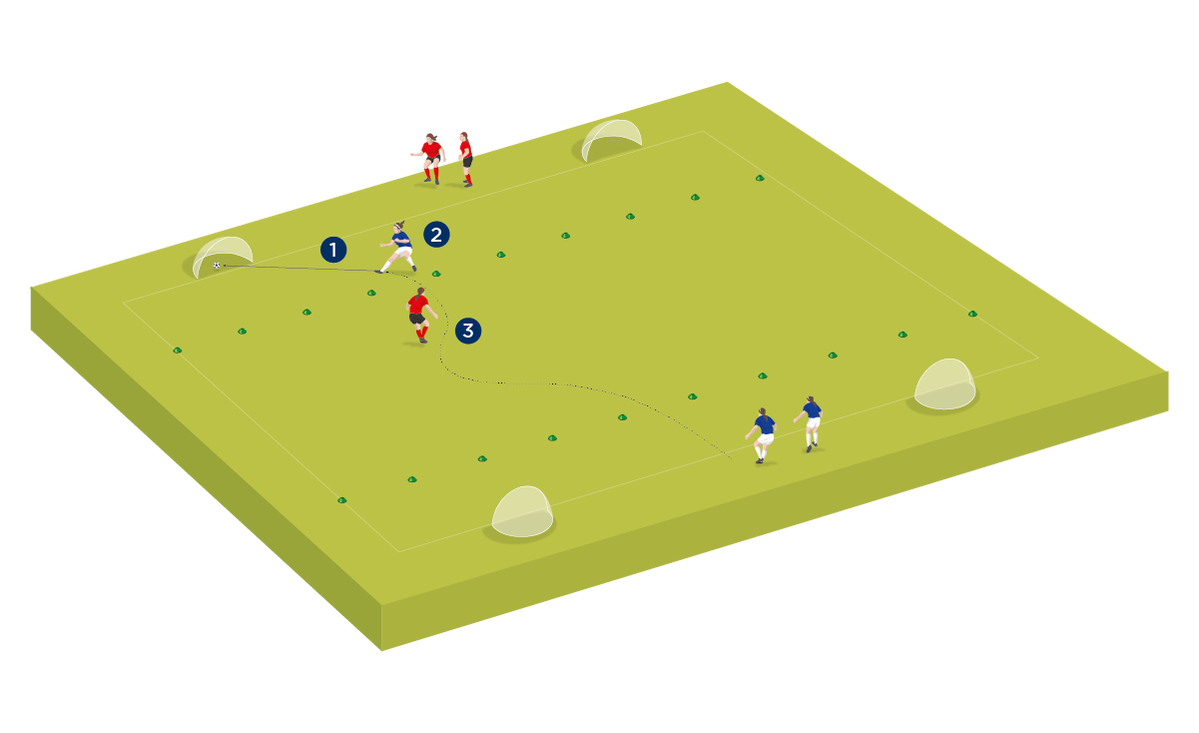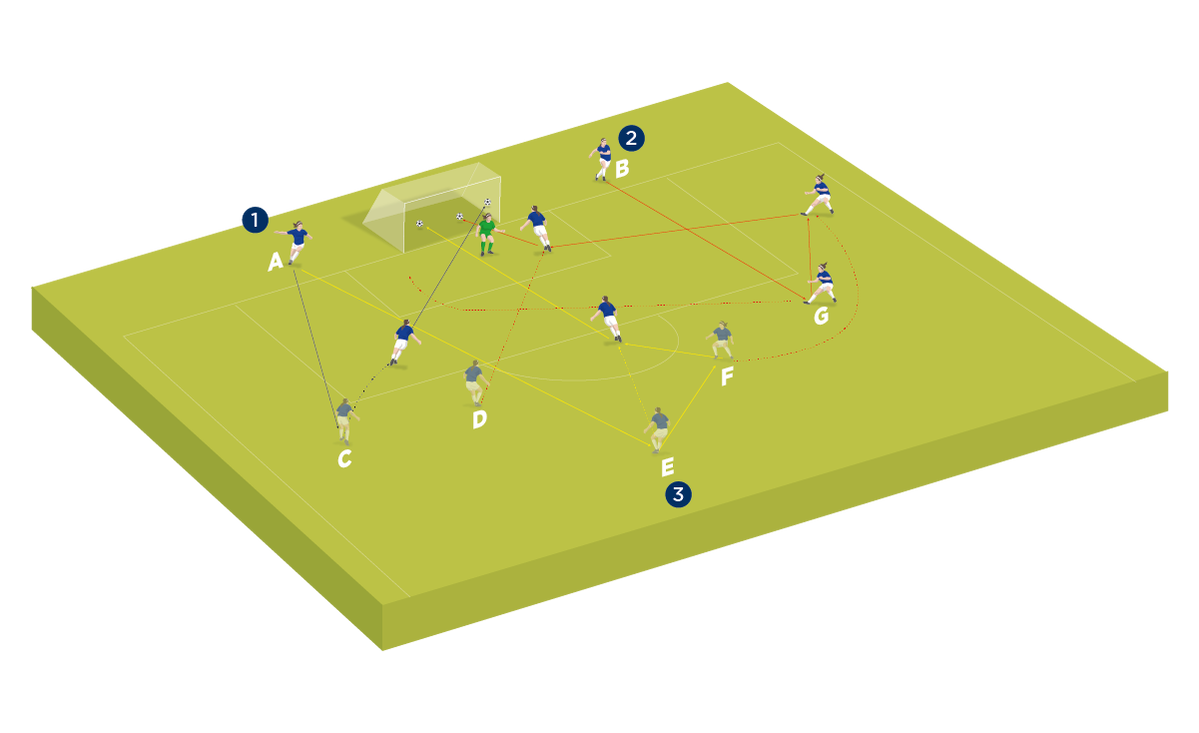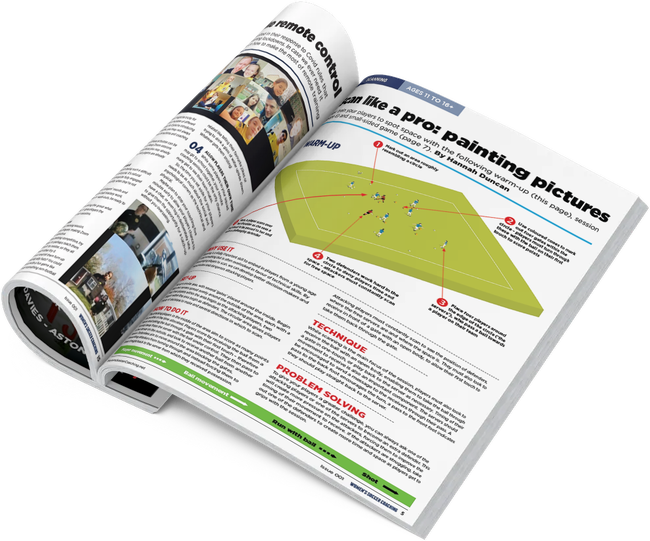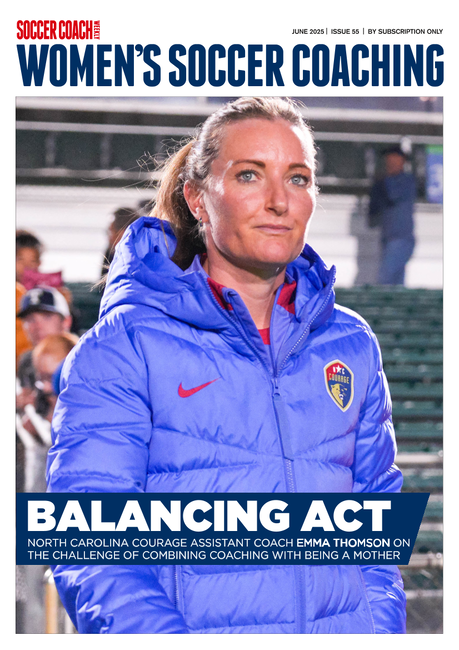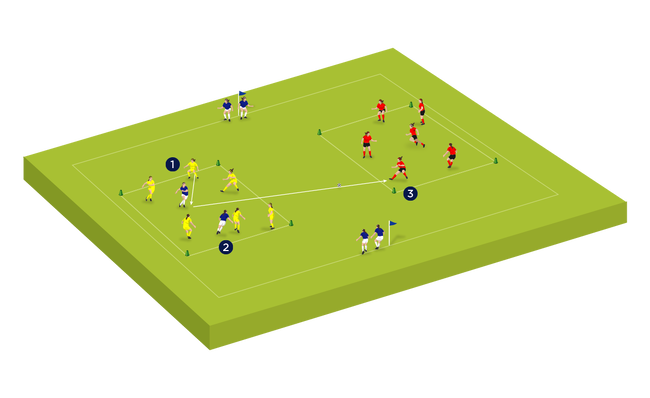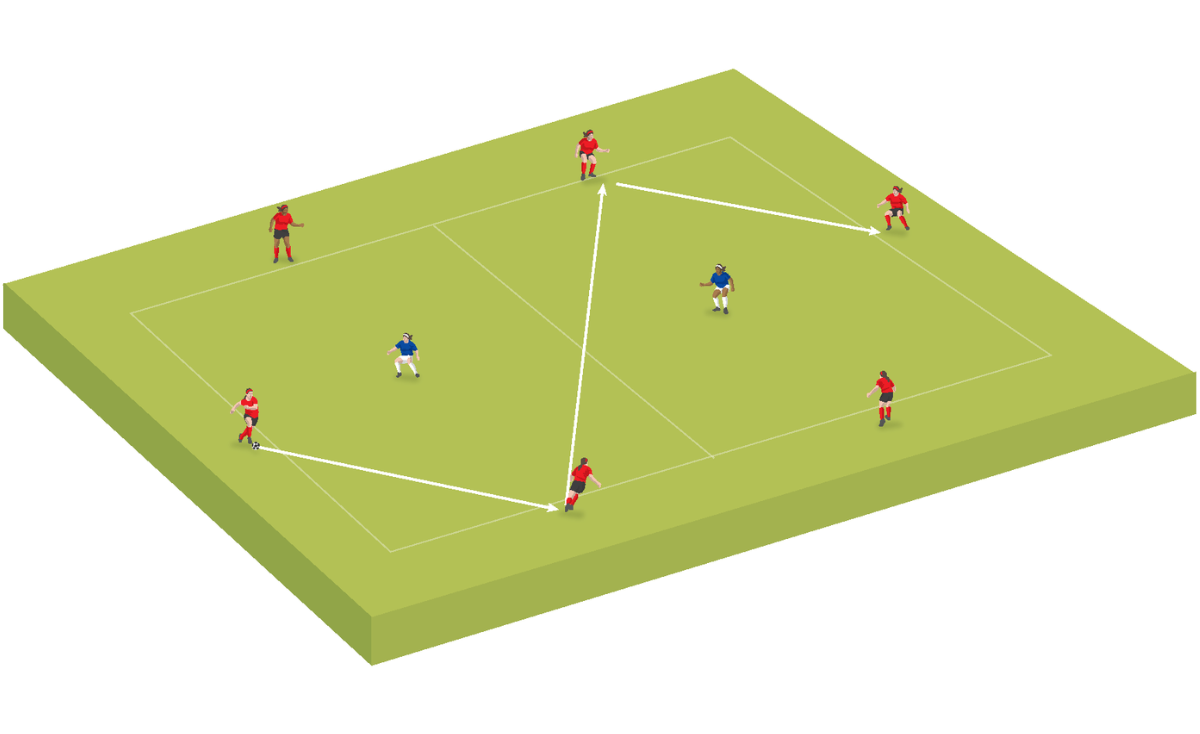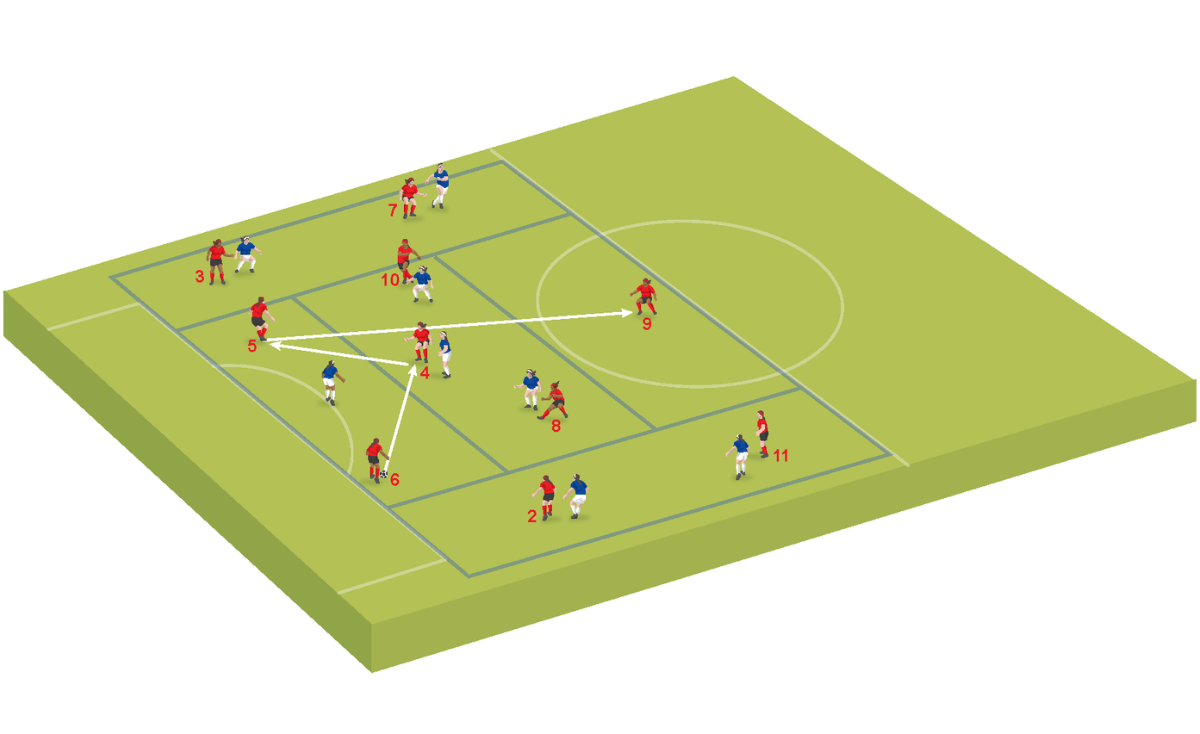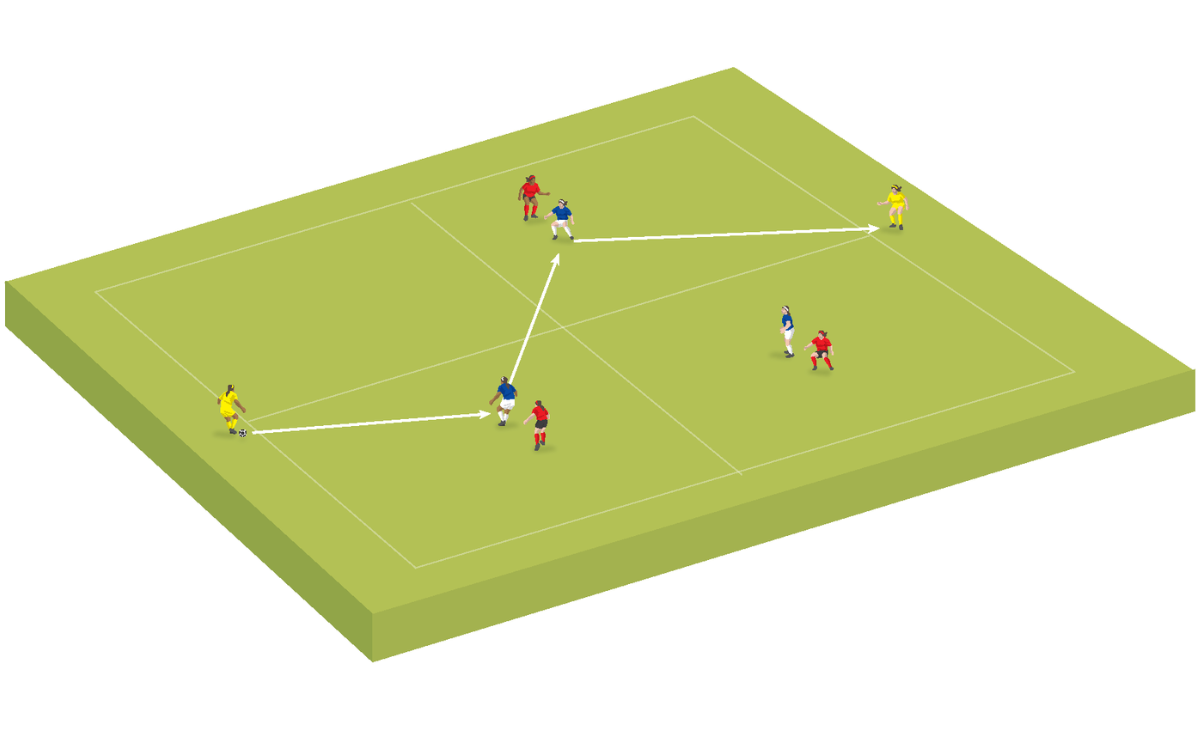You are viewing
1 of your 3 free articles
Close-range finishing
Three-part session to work on shooting, which includes lots of repetition and realistic pressure. Session structure: three practices.
WHY USE IT
Allows players to work on close-range finishing, with plenty of repetition and realistic pressure from an opponent.
Practice 1
Set up
Set up an area relative to the age, number and ability of your players. It is best to set up multiple practices to keep team numbers to three players maximum. Place two mini goals and an end zone at each end.
How to play
One player from each team enters the area to play a 1v1. Players must dribble into the end zone before they can score. Defenders can’t enter the end zone. Once a goal has been scored, or the ball is out of play, two new players enter the area.
Progressions
Progress the practice to allow defenders to enter the end zone. A second progression could be that players have to shoot from outside the end zone.
You can then further progress by allowing an attacking team-mate to join in to create an attacking overload.
Coaching points
By using smaller goals in wide positions, the finishing technique is an angled finish with the inside of the foot. Body shape, balance and vision are all required to find the side of the net.
Encourage players to get to goal quickly, changing direction and finding the space to get to goal.
-
One player from each team enters the area to play 1v1
-
Players can only shoot from within the end zone
-
Their opponent is not allowed into the end zone to defend
Practice 2
Set up
Set up an area relative to the age, number and ability of your players. You can use the same space from the first practice, but now with just one mini goal at each end and no end zones.
Players who aren’t active on the pitch are ‘bumpers’ next to the goal that their team is attacking.
How to play
One player from each team enters the area to play 1v1. Players can use their team-mates (‘bumpers’) to pass to. Once a goal has been scored or the ball is out of play, two new players enter the area.
Progressions
Use a 2v2 in the middle, with one ‘bumper’ player for each team on the outside. You can also limit touches for the ’bumpers’.
Coaching points
This practice adds combination play with team-mates, decision-making and how to run off the ball to get in a position to finish.
Related Files
-
One player from each team enters the area to play 1v1
-
Players not currently active in the practice act as ’bumpers’ either side of the goal their team is attacking
-
Players in the 1v1 can use their team’s ’bumpers’ to pass to
Practice 3
Set up
Set up the area using a third of the pitch, including the penalty box and a full-size goal. You will need a goalkeeper and players at seven around the area.
How to play
Set up with three different shooting scenarios. Players rotate each time they pass/shoot.
- Player A passes to player C, who moves into the box and shoots.
- Player B passes to player G. Player F makes an overlapping run and receives a pass from player G. Players G and D run into the box, to attack a cross from player F.
- Player A passes to player E, who plays a give-and-go with either player D or F. Player E shoots.
The pressure on the players now comes mostly from the time limits set - how many goals can they score in two minutes? How about one minute?
Progressions
You can add a defender or two to the practice.
Coaching points
Players should look up and pick a spot for the shot, based on the goalkeeper’s position, and try to take an early shot before the keeper is set.
Follow in in case the goalkeeper spills the ball. Different shot types can be used, depending on the angle, distance and goalkeeper’s position - laces, instep, outside of boot, lobbed, chipped, curled and so on.
-
Black lines: Player A passes to Player C, who drives into the box to shoot
-
Red lines: Player B passes to Player G, while F makes an overlapping run to receive and cross. Players G and D attack the cross
-
Yellow lines: Player A passes to Player E. They play a one-two with either Player D or F. Player E shoots
Newsletter Sign Up
Newsletter Sign Up
Discover the simple way to become a more effective, more successful soccer coach
In a recent survey 89% of subscribers said Women's Soccer Coaching makes them more confident, 91% said Women's Soccer Coaching makes them a more effective coach and 93% said Women's Soccer Coaching makes them more inspired.
*includes 3 coaching manuals
Get Inspired
All the latest techniques and approaches
Women's Soccer Coaching offers proven and easy to use soccer drills, coaching sessions, practice plans, small-sided games, warm-ups, training tips and advice.
We've been at the cutting edge of soccer coaching since we launched Soccer Coach Weekly in 2007, creating resources for the grassroots youth coach, following best practice from around the world and insights from the professional game.
